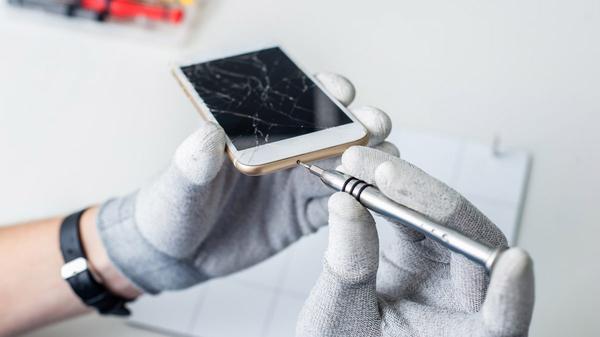Starting in early 2022, Apple's new Self Service Repair online store will offer Americans official repair guides as well as the tools and parts needed to restore the different versions of the iPhone 12 to good condition. and iPhone 13. At launch, 200 parts and tools will be offered to those who wish to change, for example, the screen, cameras and battery of their iPhone. The store is expected to grow over time to also include replacement parts and tools for more components and to allow repair of MacBook computers. Self Service Repair will expand to other countries later in 2022 (the list has not been announced, but Canada is expected to be included).
This is an important step forward for those who regret that it is increasingly difficult to repair their gadgets. At present, a consumer who wishes to replace a part of his iPhone must consult repair guides produced by third-party companies (such as those of the American iFixit) and find on the Internet parts whose authenticity is not always guaranteed.
A non-genuine part can cause problems: the screen may be protected by lower quality glass than that used by Apple, for example, and the battery charge may be lower than that of the original.
And that's just one of the many ills with repairs right now. Sometimes parts are soldered to the motherboard and therefore cannot be replaced.

Software protections may also display messages stating that the authenticity of a component cannot be verified when it was installed by a consumer or an unauthorized repairer, even if it is from Apple.
The noose is tightening on the industry
The announcement released on Wednesday comes after several months of political and public pressure in the United States and around the world to promote access to repair.
Groups like The Repair Association, for example, are urging several US states to legislate to make it easier to repair products like electronic gadgets and farm machinery.
Last summer, Joe Biden even signed an executive order inviting the Federal Trade Commission (FTC), the American agency responsible in particular for the application of consumer law and the control of anti-competitive commercial practices, to establish the rules surrounding the “right to repair”.
The concept is also gaining ground in Europe. For example, the European Union adopted a resolution last year aimed, among other things, at improving the repairability of products. In Quebec, the principle of Bill 197 to amend the Consumer Protection Act in order to fight against planned obsolescence and to assert the right to repair goods was adopted in April 2021. It is currently under discussion. study at the Committee on Relations with Citizens.
By launching its store, Apple is ahead of the various legislations in the world and should have the best role when the latter are put in place.
Note that the company will not be the first to sell spare parts to consumers. In Canada, for example, the manufacturer Huawei offers parts for its phones from the past four years directly on its site, in addition to those for its tablets, connected watches, headphones and computers.
A good start, but it will take more
Apple's Repair Shop is a step in the right direction, but it's only a first step if the company is serious about extending the life of the electronics it sells.
Since the useful life of a device does not end the day its manufacturer stops selling it, Apple and all competitors who follow suit should guarantee that parts will be available for many years. This would allow consumers to keep their gadgets long after they hit the market.
Apple should also sell its spare parts at a reasonable price that encourages repairing rather than buying a new model.
The design of the devices could also be reviewed to facilitate repairs, in particular by avoiding the use of glue – which makes gadgets difficult to open – and by favoring screws rather than welding. iFixit, which rates devices based on their repairability, recently gave the iPhone 13 Pro a 5 out of 10, lamenting among other things the difficulty of replacing the glass on the back of the phone and the need to use tools. exclusive rights to carry out certain repairs.
Accessibility to parts and tools is essential to facilitate repairs. But electronic devices must also be designed with this objective in mind if the measure is to have a real long-term effect.
We sort to extract the essentials. Make sure you don't miss anything. News in your inbox, every day.
